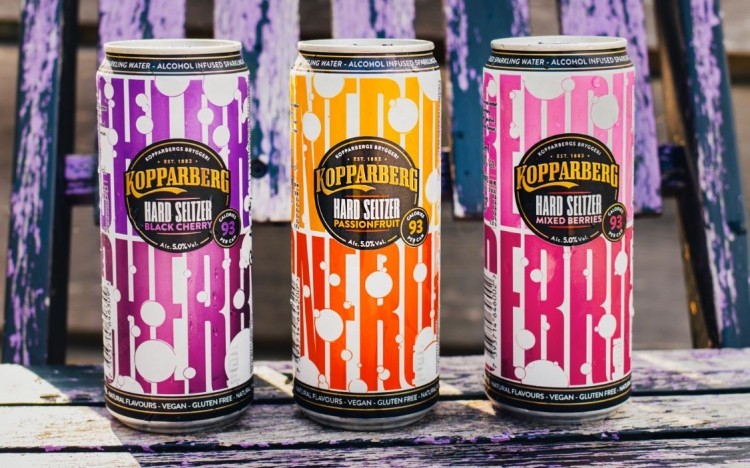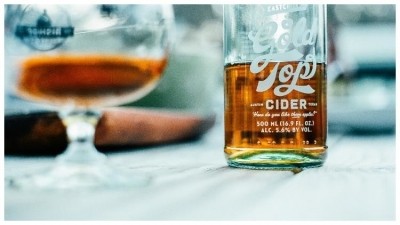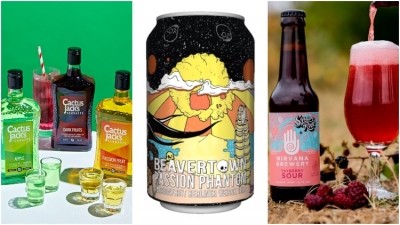In association with Kopparberg
Spiked sales: why operators shouldn’t go soft on hard seltzer

In short, yes. For most operators, hard seltzers are a new-ish trend attractive to several customer sets who will inevitably be searching for it when drinking out of home.
Essentially, they are ready-to-drink alcoholic sparkling water products and usually infused with fruit, inspiring a halo of consumer connotations such as clean, healthier and virtuous. Of course, they are alcoholic – so none of those words are used in the marketing – however, due to usually being lower in alcohol and calories, drinkers see them a healthier alternative.
Many drinks producers – both large and small – have tapped into the rising, initially Stateside, trend. There have been several notable launches in the UK since a mainstream player across the pond shipped it to our shores.
Hard Seltzers in sales:
Currently the category remains small, but growing, in the UK. However, looking at US sales data it becomes obvious what sort of trajectory hard seltzers in the UK could take.
- 7.5m – the number of new drinkers the category attracted in the US on-trade, according to Nielsen CGA data
- 52% - the number of Americans who swapped a beer for a hard seltzer
- 40% - how many US consumers took a hard seltzer over a cocktail
- $1.5bn (£1.18m) – how much, in value, hard seltzers generated in the US off-trade last year
- $1.2bn (£950,000) – the value of hard seltzer sales in the on-trade last year, compared with £210m in 2018
Fryer said: “Hard seltzers have created such a buzz in the US on-trade that, according to Nielsen, weekly sales now surpass those of the pale ale category in restaurants and bars.”
If we were looking for a dictionary definition of the category, it would probably be as simple as: “Alcohol-infused sparkling water with a fruit taste.”
The category was born in the US, with consumers and brands over there describing products as ‘hard’ or ‘spiked’ in reference to a usually non-alcoholic product – seltzer, which is sparkling water – having an ABV.
“Seltzer water is the term used for sparkling water or soda water in the US,” explains Kopparberg brand manager Rosie Fryer. “Put the two words – hard and seltzer – together and you have the fastest growing beer wines and spirits category in the States for the past three years running.”
The alcohol in the product is usually derived from a neutral grain spirit or fermented fruit base that leaves behind no residual sugar.
But what kickstarted this trend and why are we seeing sales spike in the UK? “Consumers are always on the lookout for something new and exciting; which hard seltzers have been able to offer,” believes Rachel Arthur, editor of BeverageDaily.com, a sister title to The Morning Advertiser.
“One of the strengths of hard seltzers is that they’re able to appeal to the increasing number of consumers concerned about health and wellness,” she continues.
Natural ingredients
“Often, they’re low calorie, use natural ingredients, and have a short ingredient list – taking all these things that have been key in non-alcoholic beverages over into the alcoholic beverage category.”
In the States, the category has fortified by top brands that first carved out a niche before opening it up to more competition, which has led many experts to bill it as the next big trend alcoholic drinks trend.
Arthur continues: “One mainstream brand enjoys almost 60% market share in the US and you’ll often hear it described as a ‘cultural phenomenon’ or a ‘cult favourite’, which shows how much it’s done to carve out the category.”
These products also play into the instagrammable products zeitgeist, with cans that are sleek, slender and graphic, the drinks expert continues.
All of this plays favourably into the hands of established suppliers in the UK, such as cider, gin and rum producer Kopparberg, which has launched its own range of hard seltzers in the UK, Mixed Berries and Passionfruit and Black Cherry.
Its strong brand name with significant on-trade presence is therefore familiar enough for customers to trust when trying a new product.
In terms of customer expectations of the category, Fryer explains: “In the US, hard seltzers have benefitted from being low-calorie and low sugar, as well as attracting consumers who are looking for alternatives that are refreshing and flavourful.”
However, while food and drink trends often directly translate into the UK from the US, that doesn’t mean the consumers are the same, something both Arthur and Fryer agree on.
“The UK consumer is different,” says Fryer. “It’s no secret that Kopparberg launched Balans Aqua Spritz in early 2019 which was a carbon copy of the hard seltzer taste profiles coming out of the States. The product hasn’t been successful and we learned a lot from this launch.”
“Most hard seltzers are really light in taste which the majority of consumers find very disappointing,” continues Fryer. “With the launch of Kopparberg Hard Seltzer, we wanted to ensure we could offer all the category benefits with the full flavour that the Kopparberg brand promises and we think we’ve achieved this.”
Britain's love of gin
For Arthur, hard seltzer’s sweet spot could be when it collides with Britain’s love of gin, if the seltzer category can take share away from gin, then it could be in for a win. “The two markets [UK and US] are not identical,” she starts. “Hard seltzers, and gin and tonics both generally present themselves as being refreshing, relatively light in calories and trendy instagrammable drinks.
“In the US, hard seltzers are now one of the biggest competitors to beer, so how will the dynamics between the two categories play out in the UK?”
She adds that the UK still faces a “bit of an alcopop hangover” from the nineties and early noughties, with some Brits likely to be hesitant of ready-to-drink products. However, the lighter credentials of hard seltzers could help overcome any misgivings, especially in light of current affairs with RTDs now expected to surge in sales in the on-trade.
How to serve hard seltzers:
Educating consumers about what the product is, how and when it should be drunk and where it fits into their lifestyle is the first hurdle of making the hard seltzer category a success in any outlet, explains Fryer.
On how to serve the products in a pub, she suggests: “Hard Seltzers are traditionally drunk straight from the can but over ice with a garnish will provide customers with a more premium experience.”
Looking ahead, for a candid Fryer the future of the category will be “boom or bust” and nothing in between.
“The UK has a love for full flavoured drinks and the flavoured gin and fruit cider market proves this,” she says.
“There is no doubt a growing undercurrent among the youth generation for products that are more suited to their lifestyle but whether or not they adopt hard seltzers is yet to be proven.”
But if one thing could ensure hard seltzer’s success in the UK it could be the versatility and scope for innovation within the category. You only have to look at the success of fruit cider in bringing out new flavours – the same can be done to keep Brits interested in hard seltzers.
“In terms of new product development, there’s always room for flavour innovation – away from the standard flavours and towards more exotic, creative combinations,” explains Arthur. “With a simple, neutral base, hard seltzers are pretty much a blank canvas.
“In the US, hard seltzers are packaged – pretty much as standard – in cans. It will be interesting to see if brands start to explore other packaging formats and how these fare in the marketplace.”
So, only time will tell if the category will be a firm fixture on British bars or if they will be a passing trend – long or short. But what is almost certain is if the warm weather kicks back up, then they are the sort of products Brits are most likely to move towards.







